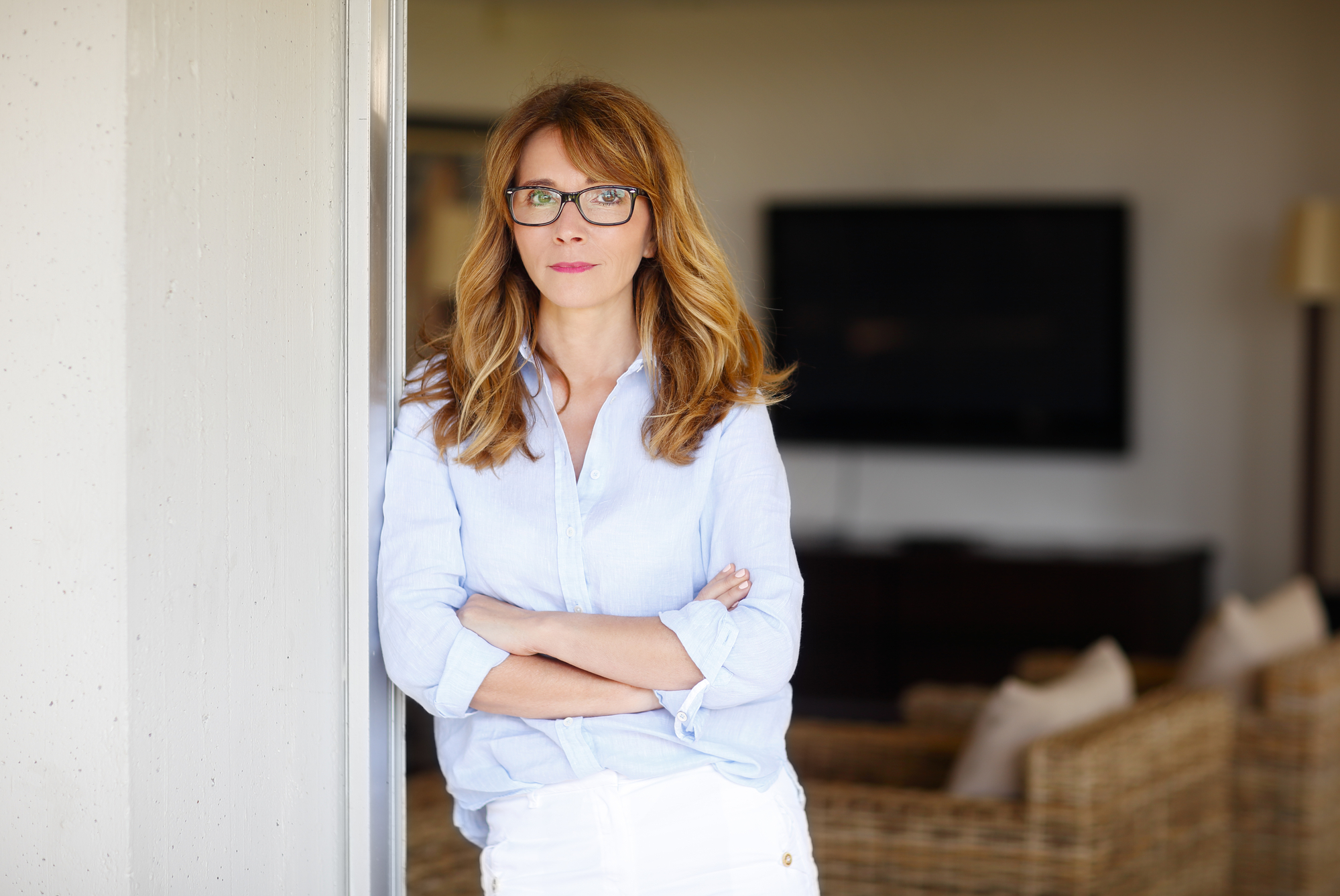Do you wish for a simpler life?

A simple life makes this complicated world much easier to navigate.
Everything moves at such a fast pace that it’s difficult to get ahead of the curve unless you have firm boundaries, understand how to prioritize your time, and focus your attention where it is needed most.
There are many ways that you can cut down on the clutter and noise of life to better reach your goals, whether it’s improving your career or finding some peace of mind.
Simple living is something that requires its own time and effort initially, but once achieved, it is a way of life that requires a lot less physical, mental, and emotional effort to maintain
Simple living will not happen overnight. Like anything worthwhile, it requires practice, persistence, and patience because whether it’s physical clutter, unwanted habits, or time commitments, things can creep back into your life again and again until you finally rid yourself of them.
Simple living is not about depriving or denying yourself things, though that is a mistake people often make. A simple life actually gives you more time and energy to pursue the things that matter most to you.
What follow are some tips for living a simple life. Tips 1-6 are for work, tips 7-12 are for the home, tips 13 – 18 are for your relationships, and tips 19-20 are for technology.
1. Don’t work when you’re not getting paid for it.

There are plenty of unsavory bosses out there who are more than happy to infringe on your time.
It’s not always blatant, though. Sometimes it’s subtle, like having a high metric for work accomplishment but not providing enough time to finish up paperwork. But hey! That paperwork needs to get done by Monday! Better make sure it gets done!
As much as possible, you don’t want to be working off the clock. If that means cutting back on a particular area of work to get everything done in your workday, then so be it.
Overachieving may not be the right choice in a traditional job, anyway. It sounds like a bad attitude to have, but in many cases, all it does is get you more work or higher performance requirements with nothing to show.
Do your job. Do your job well. Do your job on the clock. Find a way to leave work at work.
2. Have more face-to-face conversations at work.

Work gets busy. People get behind on things. They forget to do things like check emails or messages.
And sometimes they will keep you waiting for hours while you’re waiting for a small bit of information that you need to finish up your job.
Don’t do that. If you need to have a ten-minute discussion with someone, go, and have it with them face-to-face.
If you need to just get a single answer and verbally ask them the question, go and do that.
It’s a far better idea than spending four hours emailing back and forth about the thing you’re working on, unless, of course, you need that paper trail to back yourself up.
3. Decrease clutter in your workspace.

Decreasing clutter is a healthy way to be more productive, less anxious, and develop greater peace of mind.
Why? When you are in a cluttered area, your brain is continually looking over and processing all of that clutter. It’s keeping the subconscious parts of your brain busy, busy, busy, as it looks for things that are different or out of place.
This constant background process is stressful and is a drain on your emotional and mental health.
A clean workspace is less stressful and safer, depending on the type of job you have.
It’s not as big of a deal if you’re sitting at a desk and looking at a computer screen for a big part of your day. It’s a much bigger deal when you are in a workplace where a distraction can result in injury.
Either way, clearing up the clutter of your workspace can help reduce your stress. It’s a simple idea to help you live a simple life.
4. Develop your work-life balance.

What does it mean to have a work-life balance? The idea is that you want to have enough time to actually conduct your life while you’re not at work.
This can be pretty difficult for people who have an unhealthy balance. If working 80 hours a week is what you feel compelled to do to build your life and pay your bills, it’s challenging to take a step back from that workload.
It’s easy to get burned out, especially if you’re trying to run a business or you’re balancing family, school, and work. Everything is always trying to capture a little more of your time.
Do you have enough time to do what you need to do in life? If not, it may be time to reassess what you’re doing with work to strike a better balance. Simple living is all about balance.
5. Create systems to complete your work.

A system is a fantastic way to streamline your responsibilities and get more accomplished at work.
That system is a preplanned path that will take you from the start to finish of your task.
Let’s say you have a report that you need to produce for the manager every week. It’s the same report that will contain the same type of information that it had last week. You could build a system to gather that information, compile it into something usable, and then construct the report.
That makes it a far easier job to complete because you know exactly where to start, when you’ve gathered enough information, how exactly you’re going to analyze that information, and then you’ve compiled it into the final report.
A system can be developed for any responsibility that has repeatable elements. The significant part is that once you have the system down, you’ll do it faster and more efficiently as you practice it.
6. Embrace technology to simplify your workload.

How can technology simplify your workload? There are so many productivity tools out there that can help you do your job more efficiently. That might be an electronic calendar, address book, Cloud services to view your work on multiple devices, or a piece of software.
A tablet can be an excellent investment for reading or making minor notes, rather than sitting in front of a work laptop or desktop.
Learn to use any tools that you might have available to make your job easier. It’s much easier to drive a nail when you’re using a hammer.
7. Buy a slow cooker.

How would you like to save money on dinner? Have healthy, home-cooked meals? Meal-prep for up to 4 days at a time?
You can have all of these things and more for the low, low price of about $30 for a slow cooker! If you’re broke, check local thrift stores, and you may be able to find one for even cheaper.
A slow cooker is a fantastic tool to have in your kitchen because it is so versatile. It will save you money, time, and effort while cooking quality food with ease. Want to know how easy? Here’s a recipe for you.
Acquire boneless chicken breasts and a jar of salsa. Put the chicken into a slow cooker, cover with the jar of salsa. Let it cook on Low for about 6 hours or High for 4 hours. Shred chicken with two forks. Stir the shredded chicken in with the remaining salsa broth.
Voila!
For about five minutes of prep work, you now have tasty salsa chicken to use for tacos, burritos, throw it on a salad, sprinkle it on tortilla chips with cheese, stuff it in a baked potato and top with cheddar and sour cream – whatever your heart desires. Go nuts. Freeze part of it and save some for when you don’t feel like cooking!
Simple cooking = simple living!
8. Plan meals for the coming week.

Decision fatigue happens when your brain eventually hits a point where it’s just done trying to figure out what needs to happen and when.
People who live with depression or anxiety often have a lower threshold for decision fatigue because of their brain.
And those who work busy or stressful jobs may find themselves ultimately tapped out at the end of the day, where even deciding what to have for dinner is a monumental chore.
That can be avoided, and you can reduce decision fatigue by meal planning ahead of time.
On Sunday, sit down and plan out a week’s worth of dinners. You don’t really need to do breakfasts and lunches unless you’re trying to manage your family’s meals.
You can get all of your shopping done for the week in just one trip, assuming the stars all align and your children don’t eat everything you bought. Even if that’s the case, meal planning still makes things more predictable and straightforward.
Simple living is all the easier with a little bit of planning.
9. Clean out your closets and clutter.

Clean out those closets! Clean out that storage! Reduce that clutter! We’ve already touched on how less clutter can reduce stress by giving your brain a break from looking at it.
The fact of the matter is that we, as a society, have so much stuff that we can’t even use it all. Closets full of clothes, old toys, stuff that we bought to use once or twice and then never picked up again.
Declutter. Donate things to charity. Give some of that stuff to friends that can use it. It may not be something you want to use anymore, but it may bring someone else a lot of joy.
Less stuff means less stuff to manage, which means less stress and frustration in dealing with it.
Decluttering may be an obvious tip for simple living, but it works. Less clutter = less stress.
10. Be mindful of what you bring into your home.

The flipside of decluttering is to tightly control what comes into your space in the first place.
You don’t have to sort through and get rid of stuff if you don’t bring the stuff into your home in the first place.
Take some time to consider your acquisitions. Is this something you want, or is it something you need?
Do you need it to conduct your life? Or do you want it to provide entertainment?
Do you have a direct use for it? Yes, that cabinet may look cute, but do you actually have a use for it, or will it just sit around and collect dust until you are tired of looking at it?
Avoid impulse shopping. Try not saving your credit card or payment information on websites that you buy from, like Amazon. That will force you to think about getting up, getting the card, remembering why you didn’t save the card information, entering the card information, and then hitting buy.
All of those steps allow you to stop and decide, “Wait, I don’t need this.”
That doesn’t mean that you have to live some stark, brutal lifestyle with nothing fun or decorative. Just be mindful of the purpose of every item that you bring into your home – that’s key for leading a simple lifestyle.
11. Embrace the 5-Minute Rule.

What is the 5-Minute Rule? Simply put, if you can complete an action in less than 5 minutes, just do it and get it over with.
Need to go through the mail? Don’t set it aside, open it, sort it, and throw the junk away.
Just a few dishes in the sink? Counter need wiped off? Get it done. You’ll have a nice clean kitchen to come home or wake up to.
Shelf looking dusty? Grab that duster and knock it out!
We put off so many things because it’s not that big of a deal. I’ll do it later…
And after a month of putting off the little five minute jobs, you now have an hour-long job to take care of, more clutter to sort through, more things to worry about.
Simplify. Get those 5-minute jobs done.
12. Add rest and exercise to your schedule.

Adding regular rest and exercise to your schedule simplifies several parts of your life at once.
Firstly, pretty much everyone would benefit from a little bit more exercise. Suppose you’re not living some kind of active lifestyle or don’t exercise already. In that case, regular exercise will help with your general health and keeping the machine that is your body in good working order.
Even a little regular physical activity also helps you have more restful sleep when you lay down.
People with a busy lifestyle may not seem to have room in their schedule for exercise. Make the time.
Pencil it into your regular schedule and treat it with the same importance as your family or work obligations. Regular exercise is one of the best things you can do for yourself.
Exercise doesn’t have to be complicated or expensive, either. A brisk walk each day or a weekly visit to your local swimming pool is all it takes. Simple living can mean simple exercise.
And the same is true for rest. Life can get so busy, and it will run you ragged if you let it. You have to be the one to set boundaries, make sure you have enough time to sleep and find some time for rest if you’re working hard.
Burning out will just set you behind your responsibilities and efforts. Life is a marathon, not a sprint.
13. Audit your social circles.

In much of the writing about socialization and friendships, particularly regarding simplifying one’s life, there is often this message that only deep or high-quality friendships are worthwhile. Don’t waste your time on casual or superficial friendships! This advice often feels short-sighted and even disrespectful.
It assumes that EVERY friendship you have should either be some deep, soul-touching experience or on its way to that.
There’s nothing wrong with having casual friendships so long as everyone understands what is expected. If you have a casual friendship where you go and participate in a hobby with a person, is it reasonable for them to be there for you if your parent dies?
Not really. They aren’t that type of friend!
Pruning out toxic and destructive relationships is generally okay, but don’t throw away perfectly good relationships just because they’re casual or you don’t know those people well.
Being a part of a solid social network is a great way to touch new opportunities, meet new people, and have new experiences.
Audit your social circles, but do make sure that you understand what kind of relationship you have with the people in those circles.
14. Let go of what you think should be.

The heart wants what the heart wants. And sometimes, the heart wants something that another heart does not want. Sometimes, that other heart is unsure or just not interested. Sometimes, that other heart just isn’t very good and may string along your heart because they find you useful or like the attention.
Don’t hold on to what you think should be. Look at things how they are.
The person who’s not really interested or unsure? Okay, let them go.
Do they not respond or frequently forget about you? Cool, there are other people in the world.
Do they not reciprocate the kind of effort that you’re putting in? Do they disrespect your feelings or what you want? Then hey, that’s not on you. That’s on them.
All of that is okay, so long as you can tell yourself it’s okay through the ugly feelings that come with accepting it.
Don’t throw disproportionate energy into the relationship in the hopes of what you think it should be. Just let it go if they don’t reciprocate. Don’t complicate your life by jumping through pointless hoops.
15. Learn to love being alone.

The ability to love being alone is almost a superpower. It’s something that will keep your life simple because you won’t be chasing relationships and situations that aren’t right for you.
Many people sacrifice years of their life in bad situations or with the wrong people simply because they cannot tolerate the idea of being alone.
The problem with that thinking is that it assumes that the other person is worth being around. You can be far greater company to yourself than someone who is not kind or doesn’t value you.
So many people get caught up in the fear that if they are alone, they will never find anyone else at all. And that’s just not true. There are a lot of people out there. It can just take some time and work to sift through them to find the real connections we are all looking for.
16. Embrace your authenticity.

To be authentic is to live in tune with yourself and your values. It’s not dressing up or putting on a show to be accepted by other people.
Authenticity is a statement of self-confidence. It shows other people that you are comfortable with who you are and live the life you want to live.
And you know what? It can be tough to live authentically when we’re so sensitive to the expectations of friends, loved ones, social groups, and society.
But embracing your authenticity is an essential facet of living simply, finding your people, and creating your happiness.
It’s so much less stressful to move through life when you’re not trying to remember what not to do to offend this friend or what not to say to not get ostracized by this other group.
If it’s right for you and it’s not hurting anyone else, then disregard them. If you follow your North Star, you’ll eventually find other people heading in that same direction.
Simple living means being yourself.
17. Learn to practice forgiveness regularly.

The art of practicing forgiveness is a tremendous way to live. And it is not an easy thing to do.
To practice forgiveness is to understand that other people are generally doing the best they can with the hand they were dealt.
Yeah, that guy might be a total jerk to other people, but who knows what made him that way? What did he live through that turned him into a self-centered, angry jerk? Would he be doing that if he had healed from whatever influenced his worldview and behavior?
Maybe we just don’t have a clear picture. Maybe he wasn’t a jerk until his mother wound up in hospice and wasted away from cancer. Maybe it’s a significant loss or a trauma that is driving that behavior.
That doesn’t mean you have to tolerate it or be a doormat, though. Healthy boundaries are good for everyone, even if they don’t seem like it.
But the ability to not take it personally and forgive that person will free your mind from a lot of complicated emotions and conflict.
18. Be present and open to new experiences.

Going with the flow is sometimes the only way to go.
Sometimes we set down detailed plans about how we want a particular thing to go, and it just does not go that way at all.
Life doesn’t often care about our plans or what we want. It will just deal us a hand of cards, and we have to learn how to play it the best that we can.
The internal struggle that we face in finding peace of mind and happiness in life often comes from the distance between what we have and what we want.
Maybe you want a loving relationship, but that just isn’t the cards right now because you haven’t met anyone that you really click with. Maybe you feel alone because you just don’t have that many friends or fell out with someone you were close to.
These kinds of things are all just part of the human experience. They are much easier to swallow if we can accept them as such and continue to create happiness at the moment as we move forward.
Things get far more complicated when we allow entitlement and expectations to cloud our perspective.
Living a simple life often means going with the flow because trying to swim against it is difficult and uncomfortable.
19. Your cellphone is for your convenience. Not for everyone else.

Distractions are a constant threat to your ability to conduct your life simply and peacefully.
Whenever your phone buzzes, dings, or otherwise indicates that you have a new message, part of your brain is lighting up to tell you to check it. That small notification plays a big role in how well you can concentrate on a task at hand.
Turn off notifications for social media and email notifications. And don’t install work applications or emails on your personal phone.
Sometimes your work will require it. They shouldn’t, but sometimes they do. If they do, go to your local big-box retailer and buy yourself an inexpensive burner phone for like $40. You don’t even need minutes for it. You can just enable the Wi-Fi to check apps and email from the burner.
Remember, your phone is for your convenience. Making yourself easily and immediately accessible to everyone else grants others permission to encroach on your time and space.
20. Uninstall time-wasting apps altogether.

Social media companies have employed psychologists to help develop reward routines that exploit the way people are wired to get them to engage with their apps. Mobile game developers use similar systems.
And before they came online, you could see this type of thing at work in every casino you would walk into…
Pull the lever of the slot machine, wait in anticipation of a win, and wow! Look at all the flashing lights and sirens to let you know that YOU’RE A WINNER! The entire process is designed to exploit the risk-reward center of your brain.
Life is what’s happening while staring at our devices, mindlessly scrolling along to be manipulated into what we should be angry about.
If you want a simpler, more peaceful, and happier life – uninstall as many of these time-wasting apps as possible and get engaged with life.









